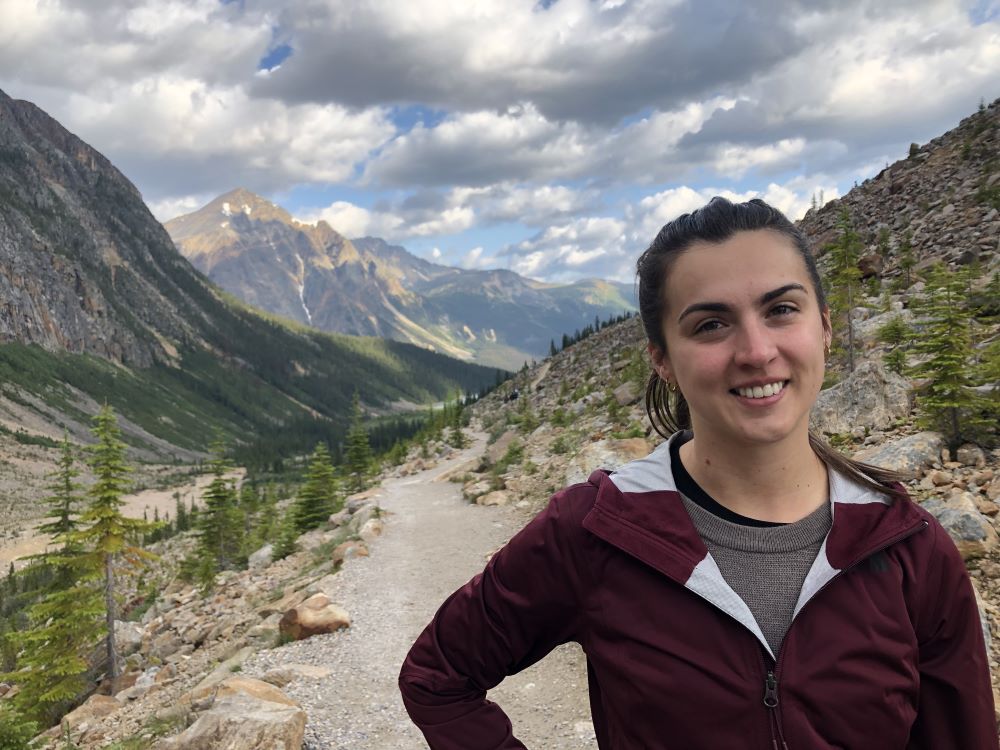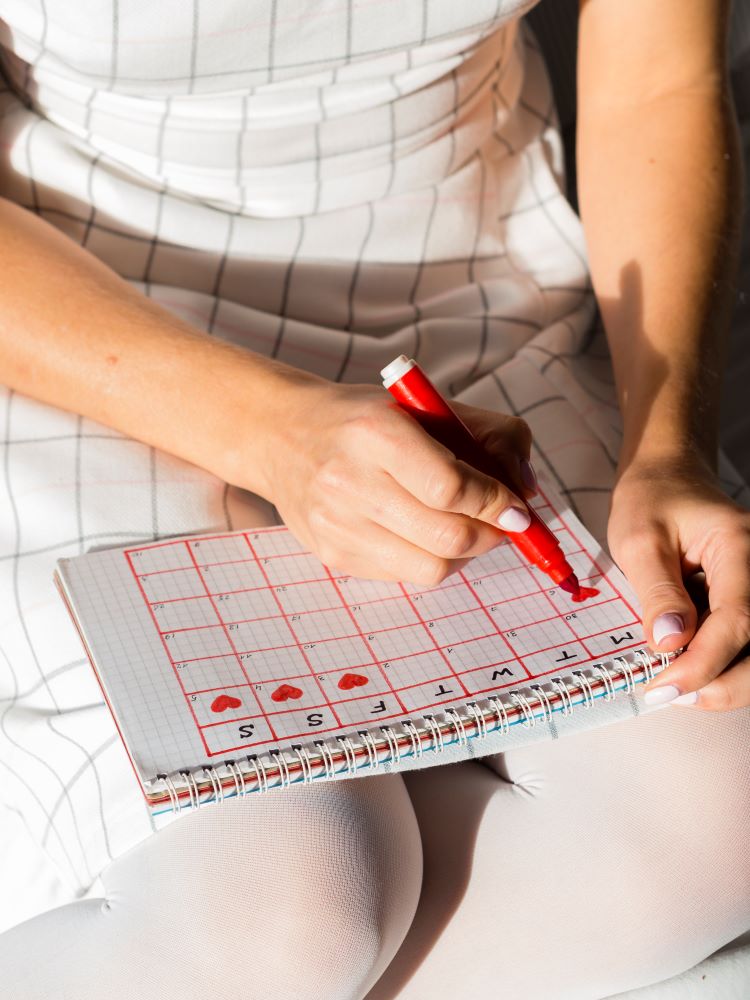Shauna shared her personal story of managing quality of life issues while living with Type 3 VWD at the 21st Australian Conference on haemophilia, VWD and rare bleeding disorders. This is a transcript of her presentation.

My name is Shauna, I have type 3 von Willebrand disease (VWD). I’d like to take the next ten minutes or so to talk about my experiences living with a severe bleeding disorder and how this has presented at different stages of my life. I know there are a few friendly faces in the room who already know a bit about me – so no spoilers please!
I was diagnosed as an infant and have lived my whole life knowing I had a bleeding disorder. As a baby learning to walk, I was progressively becoming covered in bruises with no known reason why. Due to the rare nature of my bleeding disorder, and the lack of any family history, it took some time to achieve a diagnosis. It wasn’t until a serious bleed from a cut lip that I was diagnosed with type 3 von Willebrand disease. My parents carefully navigated through my upbringing, figuring things out along the way under the guidance of my haematology team.
The way my bleeding disorder presents itself and impacts my life has evolved a lot throughout my growth and development. As a child, we were mostly focused on preventing injury and bleeds. At this point in my life, I was in otherwise good health. My parents allowed me to stay active as much as possible engaging in activities like athletics, swimming, and ballet. During my childhood my main causes for concern were very severe nosebleeds that often-required hospitalisation, and careful watch during a couple of small dental procedures. At a young age, my bleeding disorder didn’t greatly impact my life. I would sometimes become frustrated that I couldn’t join in on all the sports my peers were playing, but beyond that my symptoms just were. I didn’t know any different and I was unbothered by any bleeds that occurred.
My paediatric HTC consisted of a very comprehensive team and the co-location of a women’s hospital led to a relatively smooth transition into puberty – as much as anyone could expect having severe clotting issues! I experienced extremely heavy periods that would often last over two weeks, initially managed with tranexamic acid only. I then began experiencing ovarian cysts mid cycle, and due to the comorbidity of VWD these would bleed into themselves resulting in large orange sized cysts with significant clots. During these episodes I would be in a huge amount of pain and unable to stand upright. The combination of these two issues led to a prescription of an oral contraceptive in the hopes this may solve both – and thankfully this did get everything under control to an extent.
This allowed me to then focus on re-establishing my non-existent iron levels, which continued to be a problem into my early twenties. After years of attempting to manage anaemia with oral supplements, I was eventually moved on to iron infusions. Our society is not generally accepting of open conversations about periods, something that is amplified during teenage years. My bleeding disorder symptoms during this period of my life made me feel extremely isolated. My peers could never understand the level of medical trauma I was experiencing. The fatigue and pain I experienced also led to missing out on a lot of social development and many days away from school. While in the moment we just got on with it, I do reflect on this time with sadness regarding missed opportunities.
During my early twenties I tried to stay as active as possible, continuing ballet and working in a relatively physical job. I started to experience new symptoms, like joint bleeds and bladder bleeds. When asked if I identified these bleeds because there was blood in my urine, the only way to describe the severity is that it was more like I had urine in my blood. After the third recurrence of this testing suggested surgical intervention was required and I had a few small pre-malignant polyps removed from my bladder. This was one of the first instances where I started to realise that my bleeding disorder sometimes led to more severe symptoms in relation to other health issues. I was bleeding due to the polyps, but the bleeding symptoms were amplified significantly due to the von Willebrand’s. Being extremely career driven at this point in time, I focused on work more than my health and I am proud of the milestones I achieved under the circumstances. I worked full time while completing an undergraduate degree and progressed to management level in the workplace before reaching my mid-twenties.

After almost a decade using oral contraceptives to manage heavy periods with only a few episodes of ovarian cysts, it was no longer effective, and I was experiencing extensive episodes of menorrhagia. While I was not bleeding as heavily as I was during my teenage years, I was bleeding consistently for weeks on end, with seemingly no links to my cycle. Concerned that there may have been something more suspicious going on due to the incident with my bladder, I became concerned about using further contraceptive methods to potentially mask a more suspicious issue. My haematologist suggested seeking out opinion from a gynaecologist. Unfortunately, my bleeding symptoms were prolonged due to wait times and then having to seek multiple opinions. The first specialist I met with insisted my symptoms were just bleeding disorder issues. When I expressed my concern about other problems, using the example of my experience with polyps, they again insisted that this was due to my bleeding disorder and that I should either learn to live with it or have a hysterectomy. I was 24.
I eventually met with a new doctor who was completely understanding of my experience living with a chronic condition. They listened to all my concerns and proposed a plan of action that would address my concerns and attempt to resolve the issues. They suggested trying a Mirena for the bleeding symptoms while also conducting biopsies to ensure there were no other potential causes for the bleeding I was experiencing. I was assured that if this didn’t work, we would immediately remove the Mirena, and we would continue exploring other options.
As a culmination of this, joint bleeds, and again becoming quite fatigued after prolonged blood loss, my HTC supported a transition onto prophylaxis. The combination of these two solutions has been successful for the past 5 years. After developing the confidence to advocate myself while leaning on a support system of other people with bleeding disorders, I became more involved with the community and found it empowering to continue sharing my story to help others. I have met multiple people who have sought out a diagnosis after hearing my stories. The strength I have found to continue living a normal life despite my ongoing bleeding disorder symptoms is owed in great part to my community of peers, as well as knowledgeable and supportive health professionals.

Once I had stabilised after an extended period of bleeding episodes with the introduction of prophylactic care, I started to notice some other ongoing pain that had previously been secondary to bleeding symptoms. While seeing my rheumatologist for joint care as part of the multi-disciplinary clinic, I was diagnosed with hypermobile EDS (Ehlers-Danlos Syndrome). In hindsight, this has shed light on the reason why I always seemed to experience an increase in joint bleeds when I took breaks in my exercise routine. Having this diagnosis has meant that I can establish an exercise routine that will support my joints and reduce ongoing pain from the EDS while also reducing joint bleeds and the gradual damage this can cause. It was a relief to work through this diagnosis with health professionals who helped me understand the importance of maintaining physical health to keep everything under control. With their support I am able to continue doing things I enjoy – such as hiking and Pilates – in order to maintain an appropriate level of fitness.
While recently having a cystoscopy to ensure the polyps in my bladder have not returned, the surgeon noticed severe cystitis. I’m now undergoing the process of being diagnosed with endometriosis as a potential cause of this. Again, in hindsight this may have been the cause of a lot of the gynaecological issues I experienced growing up where the more immediate concern of bleeding was treated as a priority, as it should be, though further investigation may have prevented ongoing pain and trauma. I am now undertaking ongoing pelvic floor physiotherapy to rectify some of the ongoing pain symptoms I have, and with hopes to reduce the inflammation in my bladder. I do occasionally feel overwhelmed by all of the additional diagnoses, but at the end of the day these issues were always there and understanding how to manage symptoms has only had a positive impact on my overall health.
Managing my ongoing medical conditions and how they interact will continue to evolve as I age, and my medical health plans will accommodate these changes over time. While my bleeding disorder is usually the primary concern as the symptoms often have the most serious consequences, understanding how other health concerns may exacerbate my bleeding symptoms has been crucial in reducing the occurrence of serious and ongoing bleeding episodes. Finding health care specialists who treat my symptoms holistically and actively work against generating a band-aid fix has drastically improved my quality of life and I am thankful to have reached a point where I am able to feel in control of my own health and that I am working toward reducing occurrences of bleeding and pain.
Photo supplied by Shauna and used with permission.
Stock images: Freepik; Burst for Pexels.com.
Haemophilia Foundation Australia acknowledges the Traditional Owners and Custodians of Country throughout Australia, the land, waters and community where we walk, live, meet and work. We pay our respects to Elders past and present and extend that respect to all Aboriginal and Torres Strait Islander peoples.
Sign up for the latest news, events and our free National Haemophilia magazine